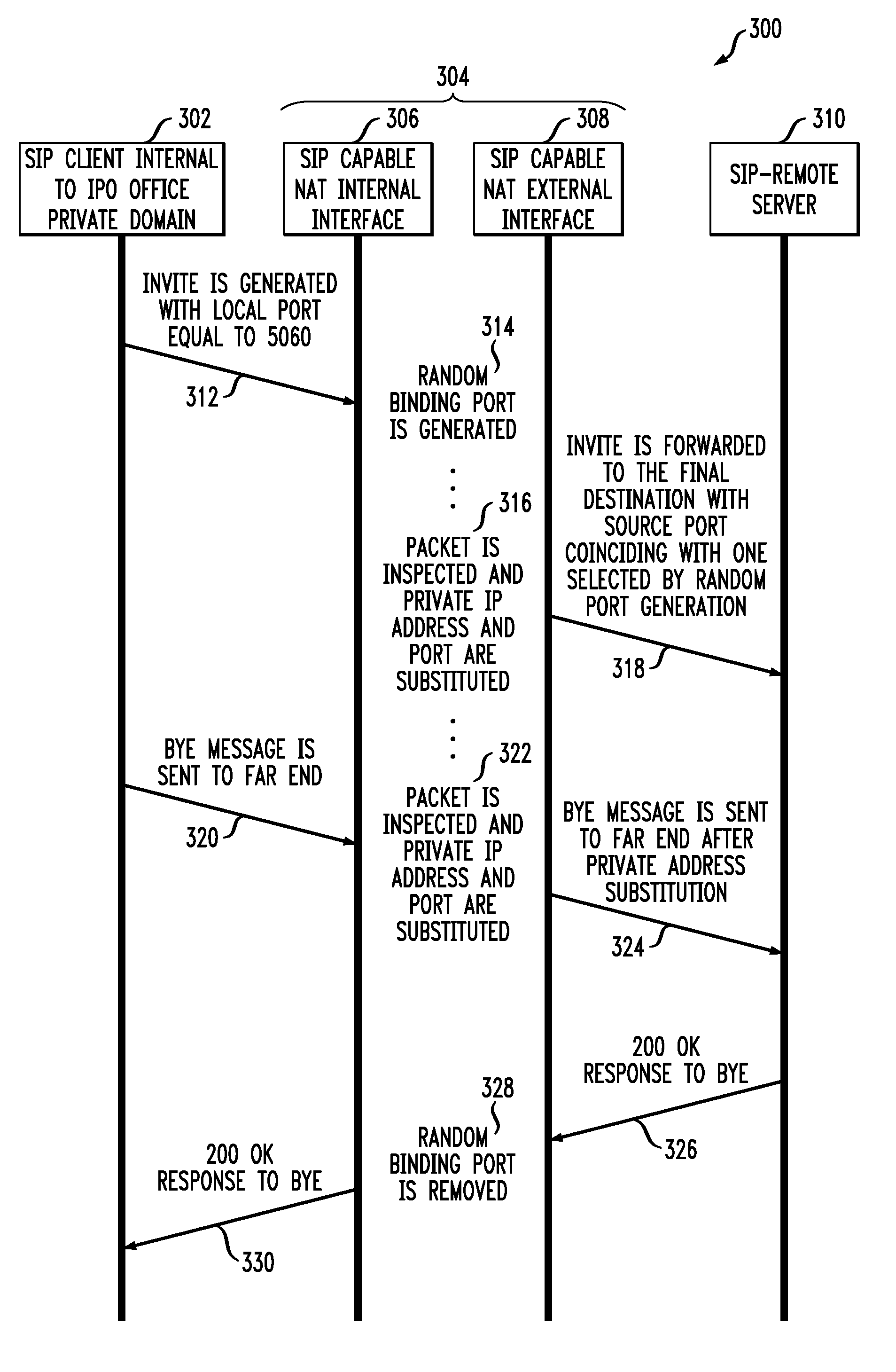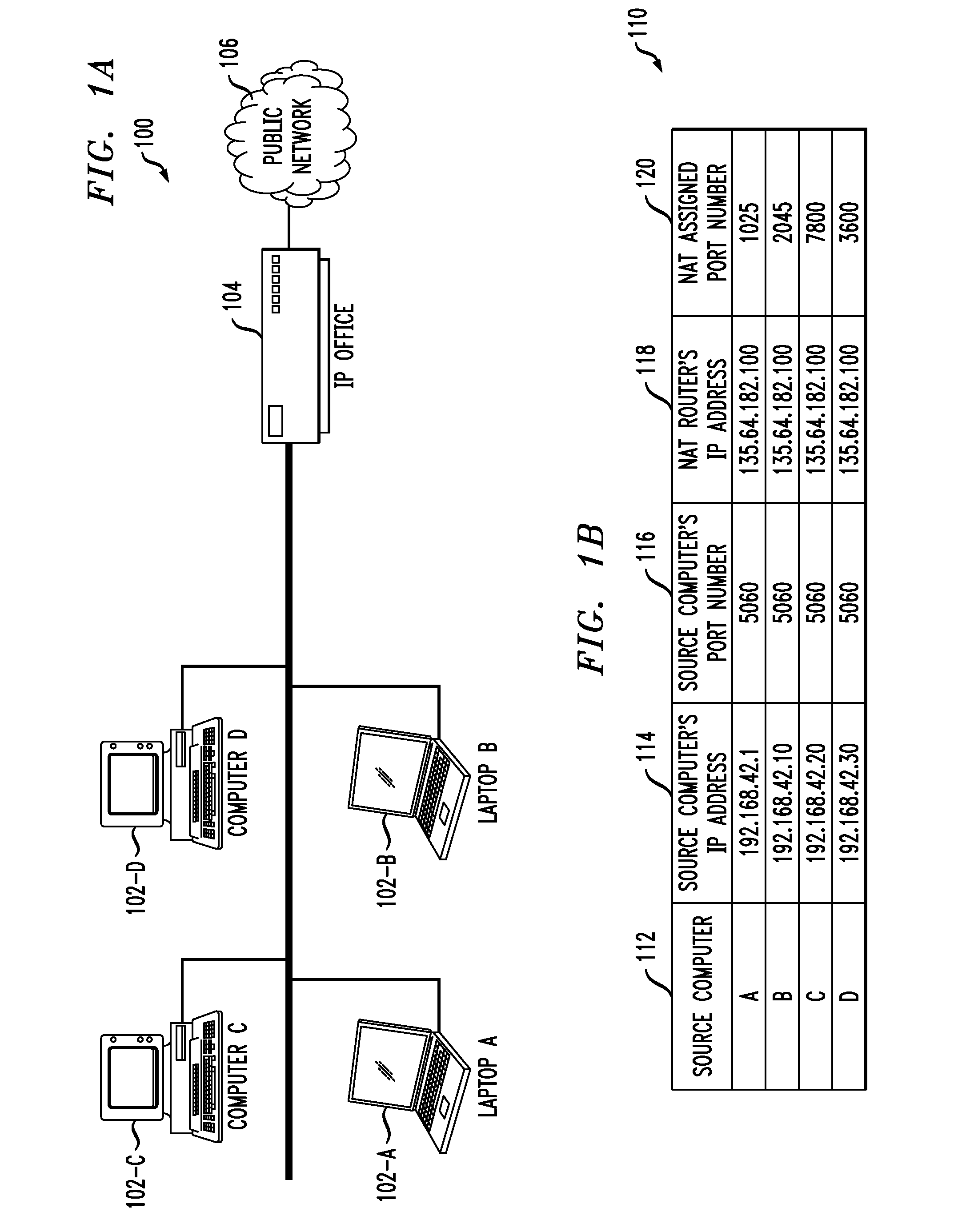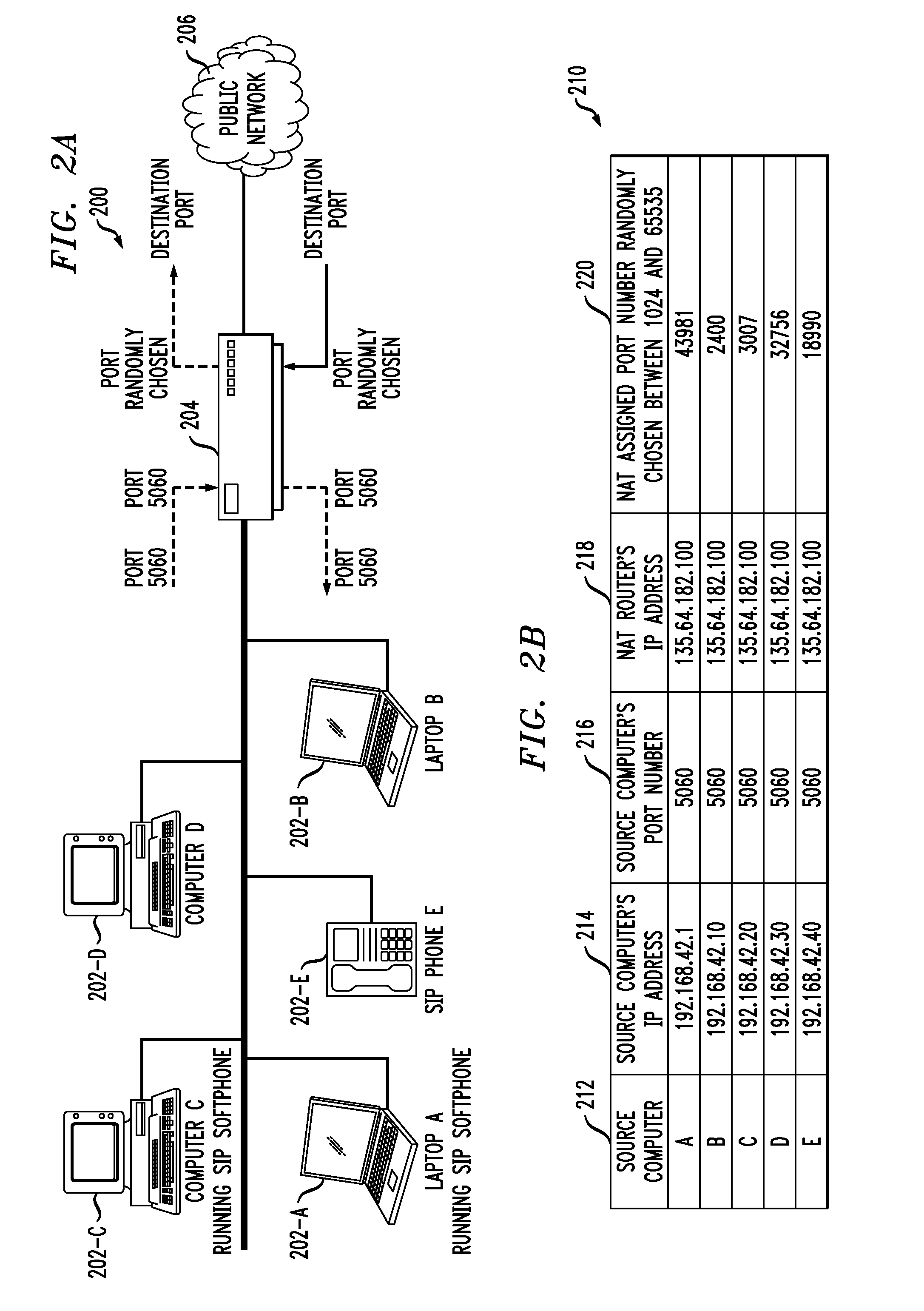Network address translation in session initiation protocol based application
- Summary
- Abstract
- Description
- Claims
- Application Information
AI Technical Summary
Benefits of technology
Problems solved by technology
Method used
Image
Examples
Embodiment Construction
[0018]It is to be appreciated that while the present invention will be described below in the context of IP telephony applications, the invention is not so limited. That is, the present invention is more generally applicable to any SIP-based application with which it would be desirable to implement NAT.
[0019]Principles of the invention define the operation of a Network Address Translation (NAT) process (or Network Address Translator) targeted toward SIP-based applications. As mentioned above, SIP messages have embedded IP addresses of the sender in the “Via” and “Contact” header fields. When passing from the private domain to the public domain, local addresses need to be substituted with a global address (assigned by Internet Assigned Numbers Authority or IANA). To accomplish this, a NAT process needs to be capable of identifying outgoing SIP messages and substituting all relevant fields such that the SIP messages are routable over the Internet by one or more SIP servers. Such a pro...
PUM
 Login to View More
Login to View More Abstract
Description
Claims
Application Information
 Login to View More
Login to View More - R&D
- Intellectual Property
- Life Sciences
- Materials
- Tech Scout
- Unparalleled Data Quality
- Higher Quality Content
- 60% Fewer Hallucinations
Browse by: Latest US Patents, China's latest patents, Technical Efficacy Thesaurus, Application Domain, Technology Topic, Popular Technical Reports.
© 2025 PatSnap. All rights reserved.Legal|Privacy policy|Modern Slavery Act Transparency Statement|Sitemap|About US| Contact US: help@patsnap.com



